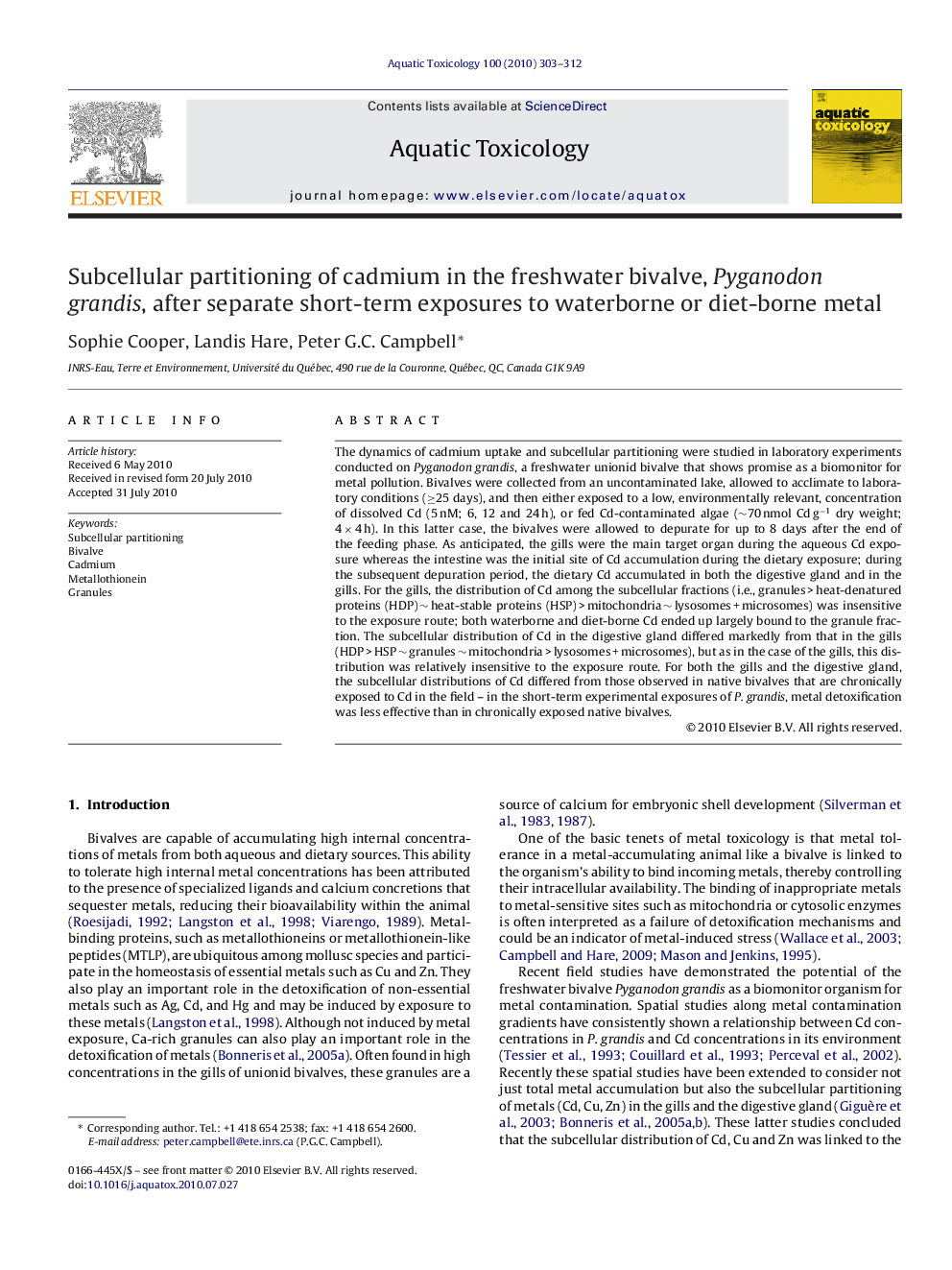| کد مقاله | کد نشریه | سال انتشار | مقاله انگلیسی | نسخه تمام متن |
|---|---|---|---|---|
| 4530028 | 1625992 | 2010 | 10 صفحه PDF | دانلود رایگان |

The dynamics of cadmium uptake and subcellular partitioning were studied in laboratory experiments conducted on Pyganodon grandis, a freshwater unionid bivalve that shows promise as a biomonitor for metal pollution. Bivalves were collected from an uncontaminated lake, allowed to acclimate to laboratory conditions (≥25 days), and then either exposed to a low, environmentally relevant, concentration of dissolved Cd (5 nM; 6, 12 and 24 h), or fed Cd-contaminated algae (∼70 nmol Cd g−1 dry weight; 4 × 4 h). In this latter case, the bivalves were allowed to depurate for up to 8 days after the end of the feeding phase. As anticipated, the gills were the main target organ during the aqueous Cd exposure whereas the intestine was the initial site of Cd accumulation during the dietary exposure; during the subsequent depuration period, the dietary Cd accumulated in both the digestive gland and in the gills. For the gills, the distribution of Cd among the subcellular fractions (i.e., granules > heat-denatured proteins (HDP) ∼ heat-stable proteins (HSP) > mitochondria ∼ lysosomes + microsomes) was insensitive to the exposure route; both waterborne and diet-borne Cd ended up largely bound to the granule fraction. The subcellular distribution of Cd in the digestive gland differed markedly from that in the gills (HDP > HSP ∼ granules ∼ mitochondria > lysosomes + microsomes), but as in the case of the gills, this distribution was relatively insensitive to the exposure route. For both the gills and the digestive gland, the subcellular distributions of Cd differed from those observed in native bivalves that are chronically exposed to Cd in the field – in the short-term experimental exposures of P. grandis, metal detoxification was less effective than in chronically exposed native bivalves.
Journal: Aquatic Toxicology - Volume 100, Issue 4, 15 November 2010, Pages 303–312